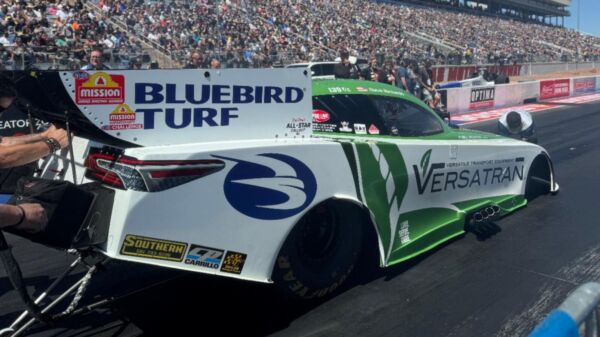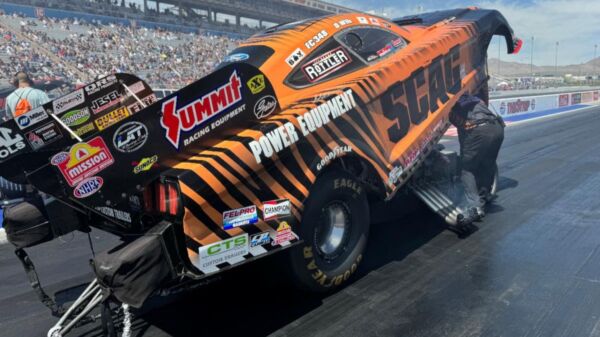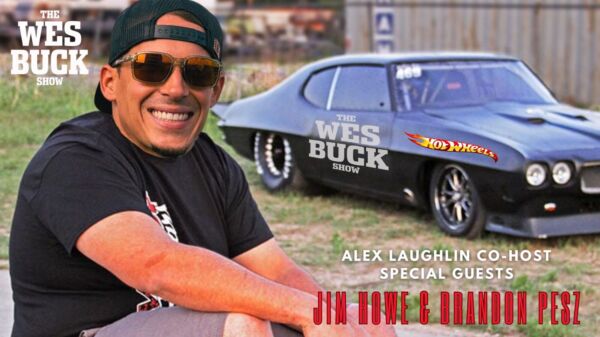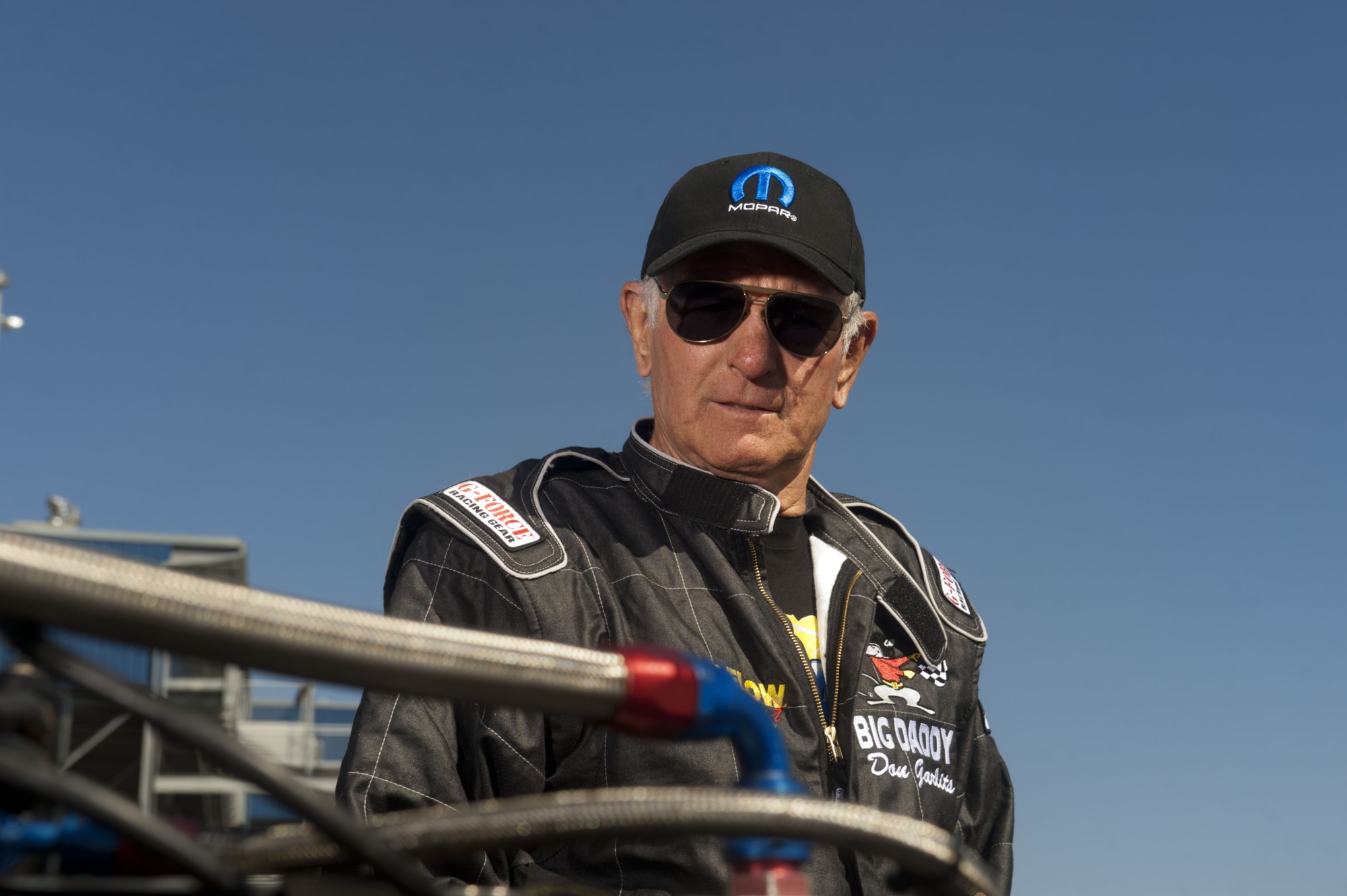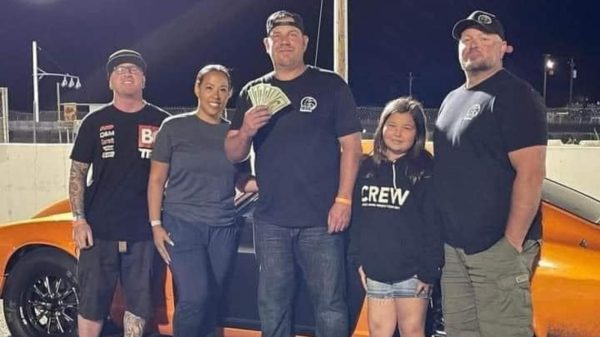Outside Don Garlits’ central Florida home, which sits on 20-acres of ground just off of I-75 in the city of Ocala, stands a 25,000-square foot shrine to straight-line motorsports with a sign affixed to it that reads, not surprisingly, DON GARLITS MUSEUM OF DRAG RACING. Today, the proprietor of said property is on break from the daunting task that is filing the tax returns on the business, and grabbing a quick bite to eat. “We’re at the Wendy’s,” says Garlits. “Pat [his wife] and I are getting a bite to eat. I can’t hear anything you’re saying. I’ll have to call you back in 20 minutes.” The phone goes dead.
[Editor’s Note: this story originally appeared in DI #54, the Nostalgia Special Issue, in June of 2011.]
There are few things Garlits takes more seriously than drag racing, as evident by the countless innovations, injuries and victories, not to mention his museum dedicated to preserving the sport’s history, but his passions do reach outside the boundaries of a quarter-mile drag strip. They are, in no particular order, politics, planets, and Pat. In Big Daddy’s world there have been few constants, but Pat, his wife of nearly 60 years, has been one of them – an obsession with acceleration and aliens being the other two.
Having been a part of drag racing since the sport’s infancy, Garlits has been there, and done that; his museum sees over 100,000 visitors every year, he’s taken on any and all willing foes on drag strips around the world en route to 144 major race wins and 17 world titles. Without question, he is the number-one drag racer of all time, and he’s still doing it, at 79 years of age no less, in a factory-backed late-model Super Stock Dodge Challenger.
During the course of two extensive interviews, which on more than one occasion were put on pause for various reasons – such as a trip across town for an old fashioned hamburger and a Frosty – Garlits looked back at his legacy and spoke openly as to the current state of the sport he so deeply adores.
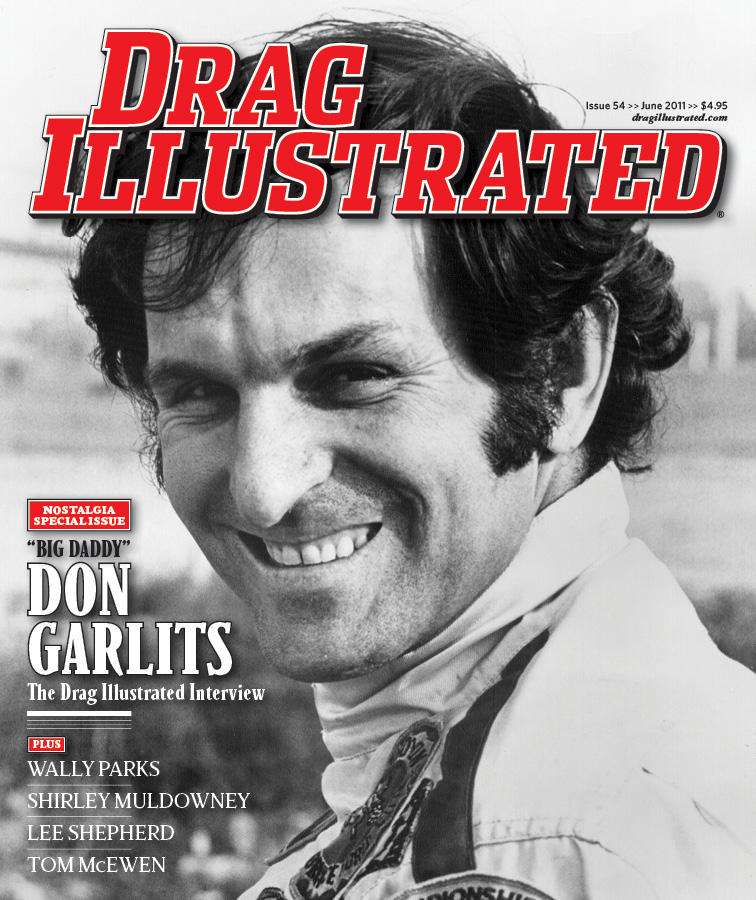 Born on a Florida orange grove, Garlits was far removed from Southern California car culture, but the prodigal mechanic had a hankering for speed. Driven to win from the beginning, Garlits was victorious in his first race, though the prize was merely a small plastic trophy. In his eyes, however, he’d conquered the world, thus his lifelong pursuit of performance on the quarter-mile that birthed 34 of his infamous Swamp Rat dragsters and a level of stardom in the sport of drag racing no one has ever reached.
Born on a Florida orange grove, Garlits was far removed from Southern California car culture, but the prodigal mechanic had a hankering for speed. Driven to win from the beginning, Garlits was victorious in his first race, though the prize was merely a small plastic trophy. In his eyes, however, he’d conquered the world, thus his lifelong pursuit of performance on the quarter-mile that birthed 34 of his infamous Swamp Rat dragsters and a level of stardom in the sport of drag racing no one has ever reached.
Over a half a century after the first organized drag race was held, Garlits’ innovations and impact on the sport are apparent, and he continues to think outside the box still today. Convinced he could do it if he wanted to, Garlits made his last pass in a Top Fueler in 2003 at Indy, fittingly – a 310.81mph blast – after his wife kindly asked him to stop doing it.
This afternoon, when Garlits speaks, it’s hard not to envision a rebellious teen, wearing a black leather jacket, hunched over the supercharged engine of a slingshot dragster. He’s pulling no punches, speaking matter-of-factly, and providing a small glimpse into his past – when his attitude and reputation struck fear in the hearts of racers and entire racing organizations.
To the casual observer it would seem he’s done nothing other than conjure up the next great racing revelation one-after-another for the last six decades, spent every waking moment thinking about going faster. But it’s clear to anyone with whom he’s spoken at any length that drag racing, albeit certainly his calling in life and from where all his success has stemmed, is one of many complex things on his mind. “Do you believe in alien visitors?” he asks, as it becomes clear that our conversation will not focus, at least in its entirety, on drag racing.
But what does one call him? Mr. Garlits? Big Daddy? Don? “Everyone calls me ‘Big’ these days,” he says. “I did get a letter addressed to ‘Chief Test Pilot’ once. It had a nice ring to it.”
You grew up in Florida, over two thousand miles away from the birthplace of hot rodding in Southern California. What about drag racing caught your attention?
I just loved it. I liked the idea of two cars lined up side by side. It’s one man against another, one machine against another. It’s real easy to figure out. There was a winner and a loser.
That early simplicity seems to be at least a little blurry today. We’ve got dozens of different classifications, the change in the race distance from a quarter-mile to 1,000 feet, the four-wide deal, etc.
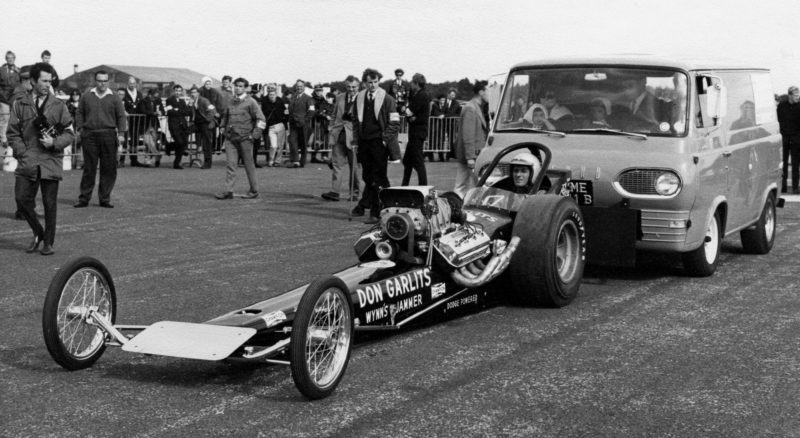 There are way too many classes. There should have never been a Funny Car class. There should have been dragsters. That would be the event. It’d be just like NASCAR. On Sunday, at the conclusion of the race, there should be one winner. And let me tell you, it was that way for many years. That’s why in the beginning we had Top Eliminator. So, when I won Top Eliminator at Lake Wales Drag Strip in 1953, I won it all. There was only one guy who got that, and that was me. First I beat the dragsters, then I beat the roadsters, then the sedan, and then I ran the coupe, and it was over. Me, Don Garlits, won the drag race that weekend.
There are way too many classes. There should have never been a Funny Car class. There should have been dragsters. That would be the event. It’d be just like NASCAR. On Sunday, at the conclusion of the race, there should be one winner. And let me tell you, it was that way for many years. That’s why in the beginning we had Top Eliminator. So, when I won Top Eliminator at Lake Wales Drag Strip in 1953, I won it all. There was only one guy who got that, and that was me. First I beat the dragsters, then I beat the roadsters, then the sedan, and then I ran the coupe, and it was over. Me, Don Garlits, won the drag race that weekend.
Then they cried. Oh, did they cry. ‘I have a coupe, I can’t beat that dragster,’ they’d whine. [laughs] It was funny. I still laugh about it. Funny Car eliminator, then Pro Stock eliminator, middle eliminator and little eliminator. This has messed it up with the press, you see. And, of course, it’s diluted the purse, too. There’s too much to pay with all these different purses for each class.
What did you think of the NHRA’s shortening of the race distance?
Let me tell you, I take my hat off to them for that. The NHRA did that and there was a lot of screaming and hollering, and now all the guys like it. I don’t believe you should run two different length race tracks at the same event. Either run everyone quarter-mile or run everyone the 1,000-foot.
I truly believe if you did a few things to slow these cars down to around 300mph, you could go back to quarter-mile racing, and the fans would really like that. It’s always been the yardstick. We should try to get back to it. I think NHRA would like to do it, but it’s so difficult. They went to the crew chiefs and they talked to them about what to do to slow the cars down, so they could go back to the quarter-mile. You don’t talk to the crew chiefs, though. That’d be like going out and asking the foxes how to keep the foxes out of the henhouse. They’re talking to the wrong people.

Considering you’ve been personally responsible for many of the innovations that helped shape the sport, what would you offer as means to slow these nitro cars down?
These cars are simply allowed to make too much power, and they put them on the edge. The equipment is unbelievably strong and beautiful and well made, but that can just cause them to make too much power. It’s the same with any type of organization. The federal government is a good example. They do things a certain way that has been somewhat successful and they are reluctant to make any radical changes. What I’d want to do, what I’m talking about – it is radical change. There’d be a lot of screaming and gnashing of teeth out there with the rules that I’d implement.
Regardless of how it’d be received, what do you think needs to be done?
Well, what we would do, first of all, is make it against the rules to put oil on the drag strip. Putting oil on the drag strip – enough where you would have to send the team out there to clean it up, not just a couple drops that could be wiped up with a shop rag – would be grounds for termination of your run. If they have to send the people out to clean it up with the rice ash and the blowers and the re-spraying of glue – that run don’t count. Same as if your wheel touches the barrier lines – it disqualifies you. That would be end of deal.And if that didn’t completely solve it, then you start decreasing both the size and the height of the rear wing. That’s what they did in IndyCar when they started going too fast. They should slow the cars down; it’d serve a greater purpose.

What’s your first reaction to professional drag racing in 2011?
I’m not happy with the fact that just a handful of teams are capable of sending a car to the winner’s circle. It’s something that could be easily corrected. It goes back to putting oil on the race track. I ran my car out there for two solid years – 2002 and 2003 – and never oiled the drag strip because I built my own motors out here in the garage with the mosquitoes biting me and I didn’t want to throw them down on the drag strip. But, I only qualified once. I just didn’t make enough power. I wasn’t going to either. I read my plugs, I read my computer, I knew that this engine would only make this much power and stay alive run after run. These guys are throwing the rods out of them every time they go out there; junking them.
So with an oil down being an automatic disqualification the teams would be forced to run the engines more safely, if that’s the word, and they’d essentially slow themselves down?
Well, they have way too big of fuel pumps on them. These 100 some gallon fuel pumps, I’d get rid of them, too. I’d get down to around 50-60 gallon, that’d be max. Matter of fact, if I was NHRA, I’d own the pumps. You’d get your pump when you got to the drag strip and you’d turn it in when you got ready to leave. You’d get your nitro from the nitro truck when you got there, too. You wouldn’t take any nitro off the grounds, nor any fuel pumps. You’d have someone like Waterman with a flow trailer out there that had all these pumps serial numbered, and you’d draw a number out of a hat to see which one you got. If you thought something was wrong with it you could flow it right there.
Do you feel the NHRA is more likely to keep the nitro cars racing 1,000 feet to control speeds or actually change the rules in regards to engines, superchargers, etc. to make less horsepower?
One thing you have to take into consideration is the Schumachers, the Forces, the Connie Kalittas are the backbone of the professional side of this sport. You don’t want to ruffle their feathers. And I can understand that these guys don’t want anything to happen to their programs. They’ve spent millions of dollars to reach the level they’re at; the pinnacle of drag racing. They don’t want all these big fancy tune ups all of a sudden to be worthless – might as well flush them down the toilet.
Outside of the obvious increase in performance, what differences do you see in today’s drag racing versus that of the pioneering days of drag racing?
Today’s drag racers, they can’t be out there unless they have a lot of money. When I raced – when Shirley, Tommy Ivo, Prudhomme raced – we did it without the money. We did it with lots of sweat and lots of hard work. You’ve still got the sweat and the hard work, but it’s divided amongst 20 some guys. That was the difference. We couldn’t afford those big teams and all those big trucks, tents, fans, and air conditioning inside where the computers are, and all. That never existed. It was a little double or single axle trailer.
Matter of fact, I have the little single axle trailer right out here by the building that Connie Kalitta won the triple crown with in 1967. He won all three Winternationals back to back. He was a killer. It was just him and a helper. But that’s how it was. We just took the sport to a different place.
Do you remember a point or a specific moment when you felt it was headed in that direction or that things were changing?
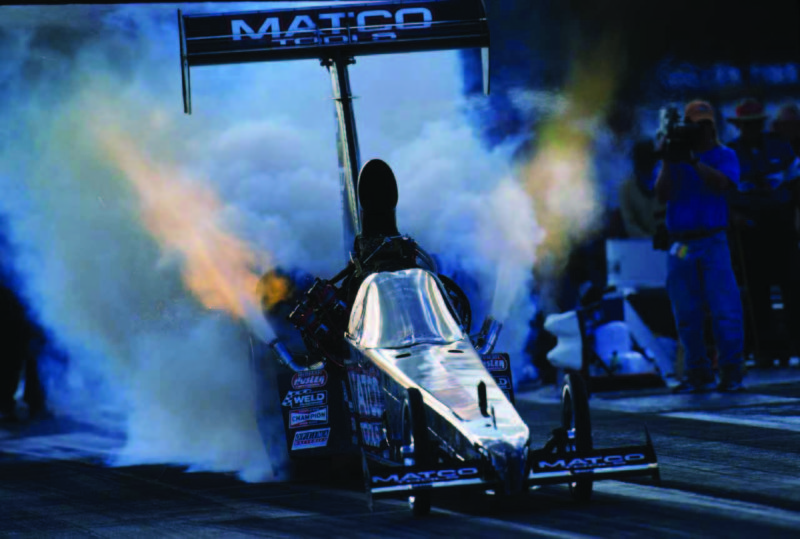 I’ll tell you one of the big major mistakes in drag racing, and it occurred at the Nationals in I think 1969. It was before the semifinal and The Snake won his round, but The Snake blew up while he did it. He came back to the pits, and I was kind of helping The Snake because I had gone out earlier, and he was a Goodyear car. This was when M&H was the top tire company, but Prudhomme and me, we were touting Goodyear tires and I was over there helping him out. We did that kind of thing back in those days.
I’ll tell you one of the big major mistakes in drag racing, and it occurred at the Nationals in I think 1969. It was before the semifinal and The Snake won his round, but The Snake blew up while he did it. He came back to the pits, and I was kind of helping The Snake because I had gone out earlier, and he was a Goodyear car. This was when M&H was the top tire company, but Prudhomme and me, we were touting Goodyear tires and I was over there helping him out. We did that kind of thing back in those days.
Then here comes the rain. The Snake, boy, he was so happy, ‘cause that would give us time. We got back to the tent, Snake pulled the engine out of the trailer and put a fresh engine in the car for the semifinal. And I told NHRA this wasn’t a good idea. This is going to start a trend. In those days, it was 20 minutes from the time at the end until you had to be back in the staging lanes ready to go. NHRA allowed them to change that motor because it had rained, and of course the very next time a guy blew up he wanted time to change his motor. They’d tell ‘em we only have 20 minutes, but they’d refer them to The Snake changing his motor at the Nationals. It was raining they’d say, but nobody cared. He got time, so they needed time. That started it.
At that point we could beat on them even harder because we knew we were going to have time to fix them. Prior to that, if you blew it or anything, you were just out. The AHRA and IHRA, for example, they had a break rule. If you broke and couldn’t come back in your 20 minutes the other car was put back in.
Technology, better parts, and better manufacturing processes, of course, have elevated the performance of these cars, but the problem with speed, to you, is more in the approach.
We sacrificed the sport. I mean, you have to look at our sport like this – NASCAR and NHRA started almost exactly the same way with exactly the same people. They were street racing hoodlums and Wally Parks took ‘em and made something out of them. He legitimized them. And Bill France, well, he took the rumrunners out of Georgia and the Carolinas and made them legitimate. It all started about the same time. And because of management the two sports have taken two different paths. Wally Parks thought different about the sport than Bill France thought about it. France always thought about the personalities- the man, the guy behind the wheel, not so much the car. Wally openly said on many occasions that it wasn’t the person behind the wheel; it was the car he was promoting. And that was a major mistake.
The other one, like I said, was allowing the guys to fix the cars in between rounds. Can you imagine if a guy, say Richard Petty, made a big hot lap around Daytona but blew the engine, so Bill France stops the whole race while Petty puts a new engine in. And then they’d start again. It would have never happened. He could have done that; he was making the rules, but he knew that wasn’t the way to go. We took a wrong turn at the fork a couple of times. It’s not the management that is there now that is the problem. All this stuff was well in the foundation before they ever got there.

It’s safe to say things may be different today if the focus had been on The Snake, Cha Cha, The Mongoose, Jungle, or Big Daddy instead of horsepower, hot rods, blowers, nitro, and miles per hour.
I tried for years to explain it, but Wally was definitely opposed to the idea. He was afraid that somebody would get popular and get powerful, more so than the NHRA. And I was one of the reasons; he saw the potential. You know, I put that PRO together and we ran a race against NHRA in 1972 and paid twenty five thousand each for Top Fuel, Funny Car and Pro Stock. I did it because I was popular; I was able to get the guys together, to get the AHRA to put up the money, and Wally was always afraid of that. He didn’t want the racers to get too powerful.
There are a few [drivers] out there now that have plenty of power, though. But you’ve got to have that. That’s what it’s going to take to make the sport a household word.
So, the difference between the success of the NHRA and NASCAR, in terms of mainstream popularity and such, has little to do with the actual racing?
From the very beginning Bill France promoted the personality. I mean, drag racing is so much more exciting than stock car racing for God’s sake. Did I ever tell you the story about falling asleep at the Daytona 500?
No.
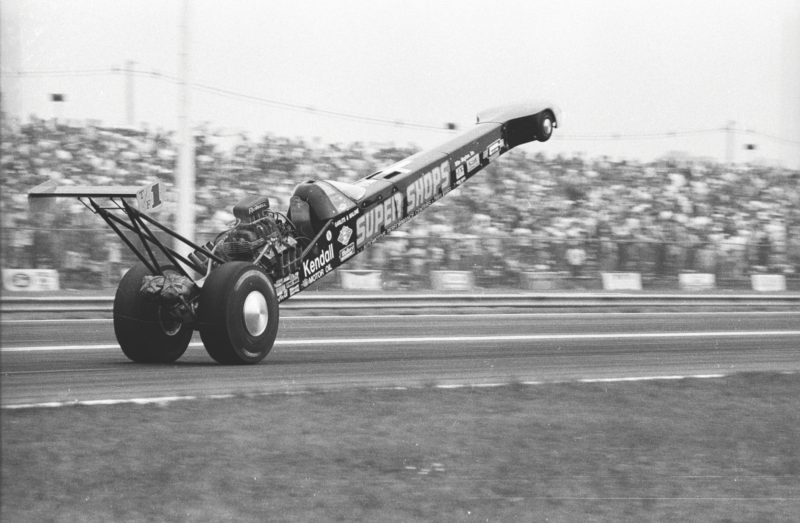 Well, I was over there working for Kendall – this was back in the 80s and they had a booth over there and a lounge in the infield or whatever. They wanted me to come over there because they had some big people coming and I was their big deal in drag racing. We were sitting around this lounge and some ladies came in, and, of course, we got up so they could sit down. I stood up in the back of the lounge, leaned up against the wall, and the cars were going around there in a circle, and son of a gun, I fell slap asleep. It was so embarrassing. I mean, these were the days of Earnhardt, but it couldn’t even keep me awake.
Well, I was over there working for Kendall – this was back in the 80s and they had a booth over there and a lounge in the infield or whatever. They wanted me to come over there because they had some big people coming and I was their big deal in drag racing. We were sitting around this lounge and some ladies came in, and, of course, we got up so they could sit down. I stood up in the back of the lounge, leaned up against the wall, and the cars were going around there in a circle, and son of a gun, I fell slap asleep. It was so embarrassing. I mean, these were the days of Earnhardt, but it couldn’t even keep me awake.
People watch NASCAR to see the stars win and lose. They watch it to see Earnhardt, Jeff Gordon, Tony Stewart – the big names. Of course, they don’t want them to crash, but they know they’re going to, and they’re not going to miss it, either.
The general public doesn’t know the first damn thing about these cars, engines, etc. We’re preaching to the choir when we’re talking about horsepower and blowers and cubic inches. It doesn’t cause your base to get bigger.
Does Top Fuel racing interest you at this point? If it were possible would you go racing again right now with the way things are?
I’ll tell you like I’ve told a few others. Top Fuel racing, I love it. It was my life. And I could have a team if I wanted one. I could surely get the sponsorship, and I got a lot of money anyway. But there are two things of mine that the NHRA will never touch if I was racing for them in Top Fuel or Funny Car. I’ve told them, I’ll just run my A/Stock automatic car. Those two things are, and not necessarily in this order, my nitro fuel magneto, and my penis.
That’s how I feel about the nitro magneto. You do not mess with that. That is mine. I put that where I want it. Nobody tells it to retard, nobody but me. It’ll blow up.
You’re talking about the NHRA’s rev limiter on these fuel cars?
Correct. I’ve talked to Alan Johnson and you can’t believe the damage that did until he learned how to work around it. The rev limiter is another reason they like the thousand foot because that doesn’t quite have time to kick in now, see. But that rev limiter…that was just absolutely gross.
Is it refreshing to be racing in the sportsman ranks?
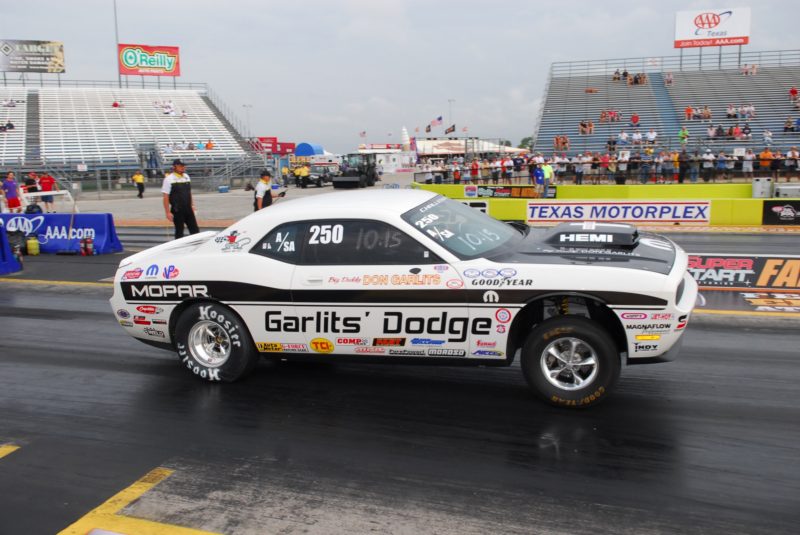
It’s like a complete return to the beginning. First of all, the sportsman racers are just super people. I love every one of them. They are so helpful and so nice. They just love that I’m over there, and I didn’t think they’d like that so much. Here’s some guy coming over from the pro pits with his Dodge Challenger. Hell, they had my damn car on the television show the other day. I mean, that’s great for sportsman racing. I’m having a good time, and I tell you, I love it. These are real cars. You can go buy one pretty damn much exactly like it right now if you wanted to.
What’s the latest at your museum? I know preserving the sport’s history is a big passion and concern of yours.
Well, our buildings are full. It’s time for us to build a new building, but we’ve been reluctant to do anything with the economy like it is. We’re really nervous about this administration we have up there. We never know what they’re going to do to us. So, we’re just hanging low waiting to see what happens. We’re full up here, though. I’ve got about 12 cars rolling around the country right now that I don’t have any room for.
Politics, I know that’s something near and dear to your heart, too.
I ran for office – for congress – in 1994. It’s not a secret, but I’m not sure how many people know that. Lost with 43 percent of the vote. Politics, economics, those are like a hobby of mine. I took accounting in school, actually. Myself and one other person that I have here at the museum do all the bookkeeping here, including all of the tax returns. But because of that, I’ve studied economics – world economics – and I know how the money system works, I know how the bank system works, and I know why we’re in the shape we’re in right now.
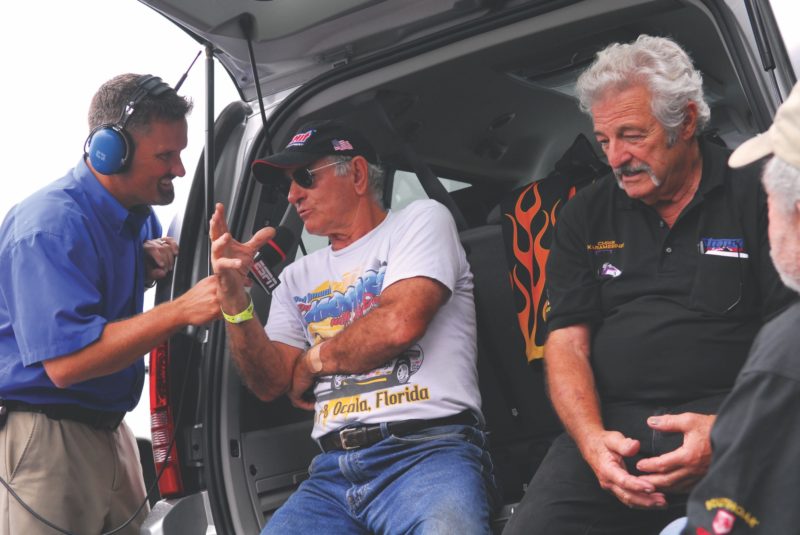 You’ve penned extensive documents on everything from politics and economics to alien life forms. I’ve read them.
You’ve penned extensive documents on everything from politics and economics to alien life forms. I’ve read them.
It’d be pretty arrogant to think that life on earth is all there is in the universe. When I was a little boy I saw a flying saucer, me and my big brother, up above the P38s dog fighting in the sky. We were lying on our backs in the field, I was 12 years old, and we were watching the P38s practice dog fighting. They did it right over our area because it was sparsely populated. And I mean, it just appeared, all of a sudden – this great big thing appears, like a big piece of pipe. Boy, those P38s got back to base, and quick. That was my first alien encounter. My dad gave me a book about it right after that crash at Roswell. It’s been a fascination of mine ever since.
You’ve certainly had a lot on your mind over the years, Big, and it’s hard to argue that you’ve been the center of the drag racing universe since the very beginning.
And I’ve loved every minute of it. I’ve stood up and said what I’ve felt since the start and, oh yeah, they beat me up from time to time. It didn’t stop me, though.
I’m telling you – if it’s not OK to touch the guard wall, especially the outside boundary line, which doesn’t harm anyone but you, how is it OK to put 14 quarts [of oil] on the track? I’m a little hard headed, so someone needs to explain to me how it makes sense.
It’s hard telling where we’d be today if we had nobody blowing up engines and we had no oil on the track. Well, no, I’ll tell you where we’d be. There’d be 100 fuel dragsters at the events and it’d be live on television. They’d run from the time you got there to the time you left and by the time you could get back to the staging lanes after a run it’d be time to go again.
They started running those dragsters in Bakersfield in 1965 at 11 o’clock in the morning and they never stopped till 5 in the afternoon when they got through the six rounds – there were 64 of ‘em.
Photographs by Mark J. Rebilas, NHRA/National Dragster and Chris Graves
This story was originally published on March 17, 2020. 


